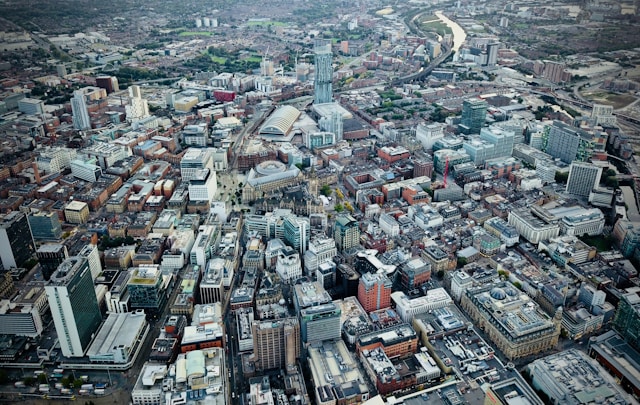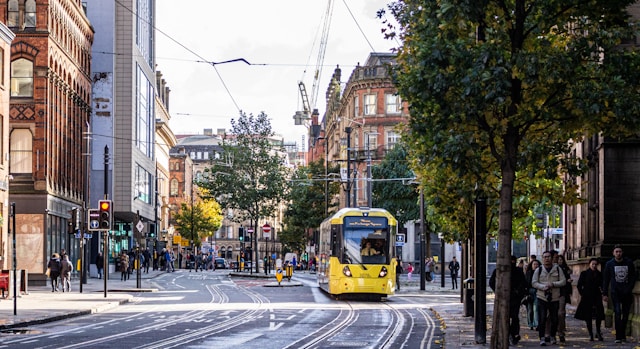Extending your house in Manchester 2025: A regional guide to costs, planning and value
Founder, Planning to Build

Thinking of extending your house in Manchester? Whether you’re planning to grow your family, add value to your property, or simply make better use of space, this guide gives you the facts on what it costs, how much value it can add and what to watch out for in Greater Manchester’s housing market.
Whether you're thinking about a side-return in Didsbury, a loft conversion in Chorlton, or a wraparound in Salford, this guide breaks down everything you need to know about extending your home in Manchester - from typical costs to local builder availability and tips for getting planning permission approved.
Why more Manchester homeowners are building out, not moving on
Let’s start with the facts. Manchester isn’t just the home of iconic music, football legends and proper rain - it’s also one of the UK’s fastest-growing cities for home improvement. With house prices rising and space at a premium, more and more homeowners in Greater Manchester are choosing to extend rather than move.
Here is what the data is saying...
- According to Pepper Money in June 2025, Manchester ranks third in the UK for secured home improvement loans (9.1% of loans in the region are for home improvements), with an average loan value of around £27,875
- The Office for National Statistic reports that average house prices in Manchester rose 7.6% year-on-year to £247,000 by March 2025
- Zoopla also notes houses are selling faster in Manchester than in most places-just 19 days on the market in Q1 2025-reflecting strong demand
So yes, you’ve seen the stats - Manchester’s growing fast and homeowners are investing more than ever into improving where they live. But what does that actually mean for you? How much does it cost to build an extension here? What kind of value could it add to your property? And what local planning quirks or restrictions should you watch out for before you break ground?

Typical extension costs in Manchester
When it comes to building an extension, Manchester offers relatively competitive pricing compared to many parts of the UK - especially London and the South East. Based on regional construction indices, Manchester’s average build costs are approximately 12.5% lower than Outer London, making it a far more cost-effective location for homeowners looking to expand.
Compared to the UK average, Manchester’s construction costs are around 2% lower. While this may seem modest, it can translate into meaningful savings on larger projects - especially when materials, labour and contingency costs start to add up. Manchester also benefits from a strong network of local builders and tradespeople, which can make scheduling and pricing more favourable than in overheated southern markets.
What does this mean in real terms?
Actual extension costs will vary depending on your design, finish level and site-specific factors such as access or structural complexity. However, here are some ballpark figures based on standard mid-range builds:
- 20m2 Single storey rear or side extension - £50,700 - £56,000
- 40m2 Single storey wrap around extension - £97,300 - £107,500
These example prices are based on data from our own extension cost calculator, which uses real project inputs and regional pricing benchmarks to give accurate local estimates.
These estimates typically include foundations, walls, roof, glazing, insulation, electrics and internal finishes - but not kitchens, bathrooms, or bespoke finishes, which can significantly increase the total cost.
It’s also important to factor in fees for planning applications (if required), building regulations approval, architectural design and structural engineering. Contingency budgets of 10–15% are also strongly advised to cover any unexpected costs or changes once the build is underway.
👉 Try our calculator now to get a clearer idea of what your extension in Manchester might cost, before the quotes start rolling in.
How much value can an extension add?
Using Plumplot's 2023 average house size in Manchester of 90.6m2 and the ONS reported average house prices of £247,000 (March 2025) we can estimate that the value per square metre in Manchester is £2,726 per m2
Therefore we can estimate the following:
- 20m2 Single storey side or rear extension - £54,520
- 40m2 Single storey wrap around extension - £109,040
You might notice that, based on our value-per-square-metre calculations, a 20 m² single-storey extension just about covers its cost in terms of added property value - meaning there’s little to no immediate financial gain.
However, that’s only part of the picture. With Manchester house prices rising by over 37% in the past five years - and continuing to grow by around 7.6% annually - many homeowners see that initial break-even turn into a real uplift within just a few years. In other words, while your extension might not deliver instant equity, it can add meaningful value within 3 to 5 years as the market grows around it.
Add to that the everyday benefits of better space, comfort, and usability - and for many, it remains a smart and rewarding long-term decision.
These figures are based on added internal floor area alone and assume that the new space is well-integrated and finished to a good standard. In reality, the value added will depend on multiple factors - including the quality of the build, the type and layout of the extension, the design choices you make and the specific location of your property within Greater Manchester.
For example, a thoughtfully designed kitchen/diner that improves flow and natural light could have a bigger impact on value than simply adding square footage. Equally, extensions in sought-after neighbourhoods like Chorlton or Didsbury may yield higher returns than those in areas with less buyer demand.
These figures should be seen as a starting point, not a guarantee. Local housing trends, buyer expectations, and planning limitations all play a part - which is why it’s worth speaking to a local estate agent or surveyor for a more tailored view.
Where are the best areas to extend?
Some areas in Greater Manchester stand out not just for their strong property values, but also for the potential return on investment from a well-executed extension. These locations tend to combine desirable housing stock, strong demand from families and professionals and planning flexibility - making them ideal spots to invest in extra space.
Didsbury and Chorlton remain two of the most sought-after areas in South Manchester. Both have a mix of period properties and larger semis, making them ideal for rear, side and loft extensions. The premium postcodes, good schools and access to independent shops and green space mean that homes here can command higher prices - and buyers are willing to pay a premium for well-designed, modernised homes with generous living space. A quality extension here can significantly increase resale value and appeal.
Sale and Altrincham also present excellent opportunities for extensions, especially among growing families who want to stay within school catchment areas without the disruption of moving. With excellent transport links - including the Metrolink and quick routes into Manchester city centre - properties in these areas see consistently strong demand. Extending in these locations not only adds immediate usability but can future-proof the property for a competitive market.
Further afield, areas like Heaton Moor and parts of Stockport have been gaining popularity thanks to ongoing regeneration, rising house prices and strong local amenities. These areas still offer relative affordability compared to central hotspots but are seeing increasing interest from buyers - which means thoughtful, well-designed extensions can deliver a meaningful uplift in both property value and lifestyle quality.
Wherever you're located, it's worth considering the local buyer profile, neighbouring properties and market ceiling when planning your extension. In areas where space is at a premium and demand remains strong, adding usable square footage can be one of the most reliable ways to boost your home's value.

Planning permission and local regulations
There are certain local rules in Manchester that could affect whether you need planning permission. For instance, converting a family home into a House in Multiple Occupation (HMO) typically requires permission, and in some areas, changing offices into flats does too. This is due to Article 4 Directions that restrict certain types of development which would normally be allowed under permitted development rights.
Manchester also has a mix of planning authorities, each with its own approach.
- Manchester City Council Planning
- Bolton Council Planning
- Bury Council Planning
- Oldham Council Planning and Building
- Rochdale Borough Council Planning
- Salford City Council Planning Applications
- Stockport Council Planning Applications
- Tameside Council Planning
- Trafford Council Planning
- Wigan Council Planning
Additionally, the Greater Manchester Combined Authority (GMCA) sets strategic planning frameworks-such as the Places for Everyone plan-that operate above borough-level LPAs
This means you'll need to take the following into consideration:
- You’ll need to submit your planning application through your local borough council - for example, Manchester City Council if your property is within the Manchester city boundary.
- Borough decisions must also align with the Greater Manchester Combined Authority’s Places for Everyone strategic plan, which sets the wider planning framework across the region.
- Policies and processing times can vary between boroughs, so your project might face different requirements or timelines depending on its location.
Explore local planning constraints
Manchester City Council also provides an interactive planning map that allows you to explore planning constraints and application histories in your area. It's a helpful tool for researching things like conservation areas, Article 4 directions and nearby approved extensions - all of which can affect what you're allowed to build and how likely you are to get planning permission.
Extending your home in Manchester can be one of the most rewarding ways to create extra space, boost your property’s value and stay rooted in the area you love - without the upheaval of moving. From competitive regional build costs to a growing pool of experienced local builders and designers, Greater Manchester offers a solid foundation for homeowners ready to invest in their space.